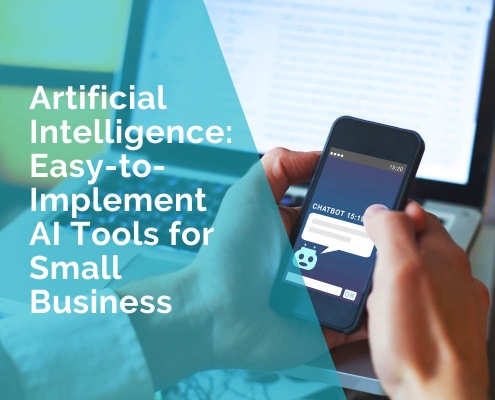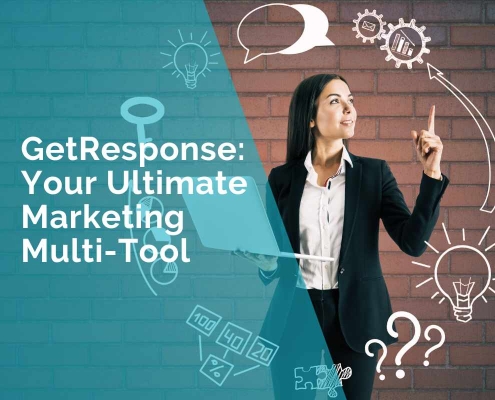Smart Security for Small Businesses: Eufy Installation without Subscriptions and Fewer False Alarms
In an era where small and medium-sized businesses (SMBs) face an increasing number of threats, including theft, vandalism and operational disruption, implementing a robust security system is essential.
By 2025, the smart security landscape will have evolved, placing a greater emphasis on cost-effective, privacy-focused solutions that avoid recurring fees.
This article analyses the deployment of Eufy security systems, which are renowned for their local data storage capabilities and subscription-free operation.
Drawing on industry trends, user experiences and technical evaluations, this article will examine how Eufy systems can be strategically installed to minimise false alarms while ensuring comprehensive coverage in typical SME environments, such as retail stores, offices and cafés.
We focus on practical planning, potential pitfalls and optimisation strategies based on real-world applications, rather than promotional hype. This ensures an effective Eufy installation.
Why Eufy Stands Out for SMBs: Local Storage, No Subscriptions, and Easy Scalability
The appeal of Eufy for SMBs lies in its core design philosophy, which prioritizes user control over data and costs. Unlike many cloud-dependent systems that mandate monthly subscriptions for features like video storage and AI analytics, Eufy relies on on-device or local network-attached storage (NAS) solutions. This approach eliminates ongoing fees, which can accumulate to hundreds of dollars annually for a multi-camera setup. For instance, in a small cafe with four cameras, avoiding a $10-15 per month per device subscription could save over $500 yearly, allowing reinvestment into other business needs.
Local storage also addresses privacy concerns amplified by data breaches in cloud services. By keeping footage on a HomeBase hub or compatible SD cards, Eufy reduces exposure to third-party servers, aligning with regulations like GDPR in Europe or CCPA in the U.S. However, this comes with trade-offs: local storage limits remote access if the network fails, and it requires users to manage backups manually to prevent data loss from hardware failure.
Scalability is another analytical strength. Eufy’s modular ecosystem allows starting small—perhaps with a single doorbell camera—and expanding to dozens of devices without ecosystem lock-in. Compatibility with standard Wi-Fi and some PoE models means integration with existing infrastructure is straightforward, though performance can vary based on network quality. Industry reports from 2024 indicate that SMBs adopting such systems see a 20-30% reduction in insurance premiums due to verifiable security measures, but only if installations are documented properly. Critically, Eufy’s AI-driven features, like person detection, operate offline, reducing latency compared to cloud-processed alternatives, which can delay alerts by seconds in poor connectivity scenarios.
However, this model does have its drawbacks. Without a subscription, advanced features such as continuous recording or enhanced AI capabilities may necessitate hardware upgrades, which could increase initial costs. For SMEs in high-risk areas, it is essential to evaluate Eufy against hybrid systems (which blend local and cloud-based options) in order to balance affordability with functionality.
Planning coverage: Entrance group, cashier, warehouse and perimeter; typical errors and avoidance strategies.
Effective security begins with a thoughtful coverage plan tailored to the layout of small and medium-sized businesses (SMBs). For a typical store or café, prioritise the following zones:
– The entrance area to monitor foot traffic
– The cashier area to deter internal theft
– The warehouse to protect inventory
– The perimeter to prevent unauthorised access
Start with the entrance. Positioning an Eufy doorbell or floodlight camera here offers dual functionality in the form of visitor alerts and motion-triggered recording. Analytical data from security forums indicates that 40% of retail thefts occur at entry points, so wide-angle lenses (with a viewing angle of up to 160 degrees in some Eufy models) are essential for capturing faces and licence plates clearly.
The cashier zone requires comprehensive yet discreet coverage. While a compact indoor camera mounted overhead can oversee transactions, avoid angles that capture customers’ PINs to prevent privacy violations. The same applies to offices where sensitive documents are handled, such as desks.
Eufy’s weatherproof outdoor cameras with night vision are ideal for dimly lit and cluttered warehouses. Positioning the cameras at the ends of shelves and at loading docks eliminates blind spots. However, relying too heavily on motion detection can lead to false alarms caused by shifting inventory.
Perimeter coverage involves installing cameras along fences or building exteriors and integrating them with spotlights for deterrence purposes. A trend for 2025 is the use of AI to distinguish between human intruders and animals, thereby reducing the number of unnecessary notifications.
Common installation errors include mounting the camera too high, which can lead to obscured views, or in direct sunlight, which can cause glare. To avoid these issues, conduct a site survey. Walk around the premises during peak hours to identify traffic patterns and test angles with temporary mounts. Another pitfall is failing to consider environmental factors. In environments with steam or dust, such as cafés, opt for IP67-rated devices to prevent fogging. Connectivity drops can be caused by overloading a single hub, so limit it to 16 devices per HomeBase for stability. By simulating scenarios such as simulated break-ins during the planning stage, SME owners can refine placements and potentially cut false alarm rates by 50%, according to user-shared benchmarks.
Network and Power: Wi-Fi vs. PoE, Channel Stability, Backup (UPS), Basic IoT Segmentation
A reliable backbone is critical for any smart security system. Eufy offers both Wi-Fi and Power over Ethernet (PoE) options, each with analytical merits. Wi-Fi models are plug-and-play, ideal for quick setups in small offices without cabling infrastructure, but they suffer from interference in crowded 2.4GHz bands common in urban cafes. PoE variants, drawing power and data from a single cable, provide superior stability for warehouse or perimeter runs, though they require a compatible switch and professional wiring, adding 20-30% to installation costs.
Channel stability is paramount; fluctuating signals can delay alerts or corrupt footage. In 2025, with 5G and Wi-Fi 6 proliferation, Eufy users should dedicate a separate SSID for security devices to avoid bandwidth competition from POS systems or guest networks. Tools like Wi-Fi analyzers can identify optimal channels, reducing dropouts.
Power reliability often gets overlooked. Brownouts in remote stores can reset devices, erasing unsaved footage. Integrating an Uninterruptible Power Supply (UPS) with at least 30 minutes of runtime safeguards against this, especially for the HomeBase hub. For PoE setups, a powered switch ensures continuity.
Basic IoT segmentation enhances security. By isolating cameras on a VLAN (Virtual Local Area Network), SMBs prevent breaches from spreading— a vital step given that 60% of IoT attacks target weak devices, per cybersecurity analyses. Eufy’s app supports guest networks, but advanced users might employ routers like those from Ubiquiti for granular control. Overall, this infrastructure not only bolsters Eufy performance but fortifies the entire business network against evolving threats.
Settings to reduce false alarms: Detection zones, IR/illumination and night mode.
False alarms can erode trust in security systems, resulting in notifications being ignored and incidents being missed. Eufy’s customisable settings provide tools to help mitigate this issue.
Detection zones allow you to mask irrelevant areas, such as busy pavements outside cafés, and focus the AI on doorways or counters instead. User data indicates that zoned detection reduces false positives by 70%, but iterative tuning is required — start with a broad approach and refine it based on logged events.
Infrared (IR) and spotlight illumination are essential for low-light environments. Eufy’s IR technology can cut through darkness up to 30 feet, but in warehouses with reflective surfaces, it can pick up heat sources and create ghostly images. Switching to colour night vision via low-light sensors provides clearer footage, though this option consumes more power.
Night mode automations, such as scheduled sensitivity adjustments, adapt to quieter periods. For stores that close at night, lowering the thresholds prevents wind-blown debris from triggering an alert, while increasing them during off-hours detects anomalies. Integrating with smart lights can deter intruders with proactive illumination, but excessive lighting can lead to complaints from neighbours in urban areas.
Advanced AI settings, such as vehicle or package detection, further improve accuracy. However, in the AI-saturated market of 2025, Eufy’s offline processing is a strength in terms of privacy, but it may not be as nuanced as cloud-updated models. Eufy releases regular quarterly firmware updates that incorporate community feedback, emphasising the need for proactive maintenance to sustain low false alarm rates.
Access and compliance: User roles, activity logs and basic privacy policies.
Managing access in a multi-user SMB environment helps to prevent internal misuse. Eufy’s app supports role-based permissions. For example, owners can grant managers view-only access to cashier feeds while restricting deletions to admins. This level of granularity helps ensure compliance with labour laws and prevents footage from being used for unauthorised surveillance.
Activity logs track views and exports, creating an audit trail for investigations. In cafés with shift workers, this deters tampering. However, logs must be periodically reviewed to spot anomalies.
Privacy policies are non-negotiable. To comply with data minimisation principles, SMBs should post signage about recording, inform employees, and limit retention to 30–90 days. While Eufy’s end-to-end encryption protects streams, users must secure app logins with two-factor authentication to prevent data breaches. From an analytical perspective, this setup aligns with the heightened privacy scrutiny expected in 2025, where non-compliance could result in fines of up to 4% of revenue under global regulations.
Case checklist: Quick start with the doorbell and upgrade to full perimeter protection.
To begin a phased rollout, install an Eufy doorbell at eye level, connect it to Wi-Fi, set up detection zones for the entrance and test the notifications. This quick win will provide immediate value and can be completed in under an hour.
Upgrade incrementally: First, add indoor cameras for the cashier and warehouse, then add outdoor cameras for the perimeter.
Checklist:
1) Conduct a site survey to identify coverage gaps.
2) Audit the network to ensure stability.
3) Integrate UPS.
4) Optimise zones to minimise false alarms.
5) Assign roles and install privacy signage.
6) Review weekly logs.
This analytical framework demonstrates the viability of Eufy for SMEs seeking autonomy in security. By prioritising strategic planning and optimisations, business owners can achieve reliable protection without financial strain, while adapting to the dynamic threats.
***
PRN












